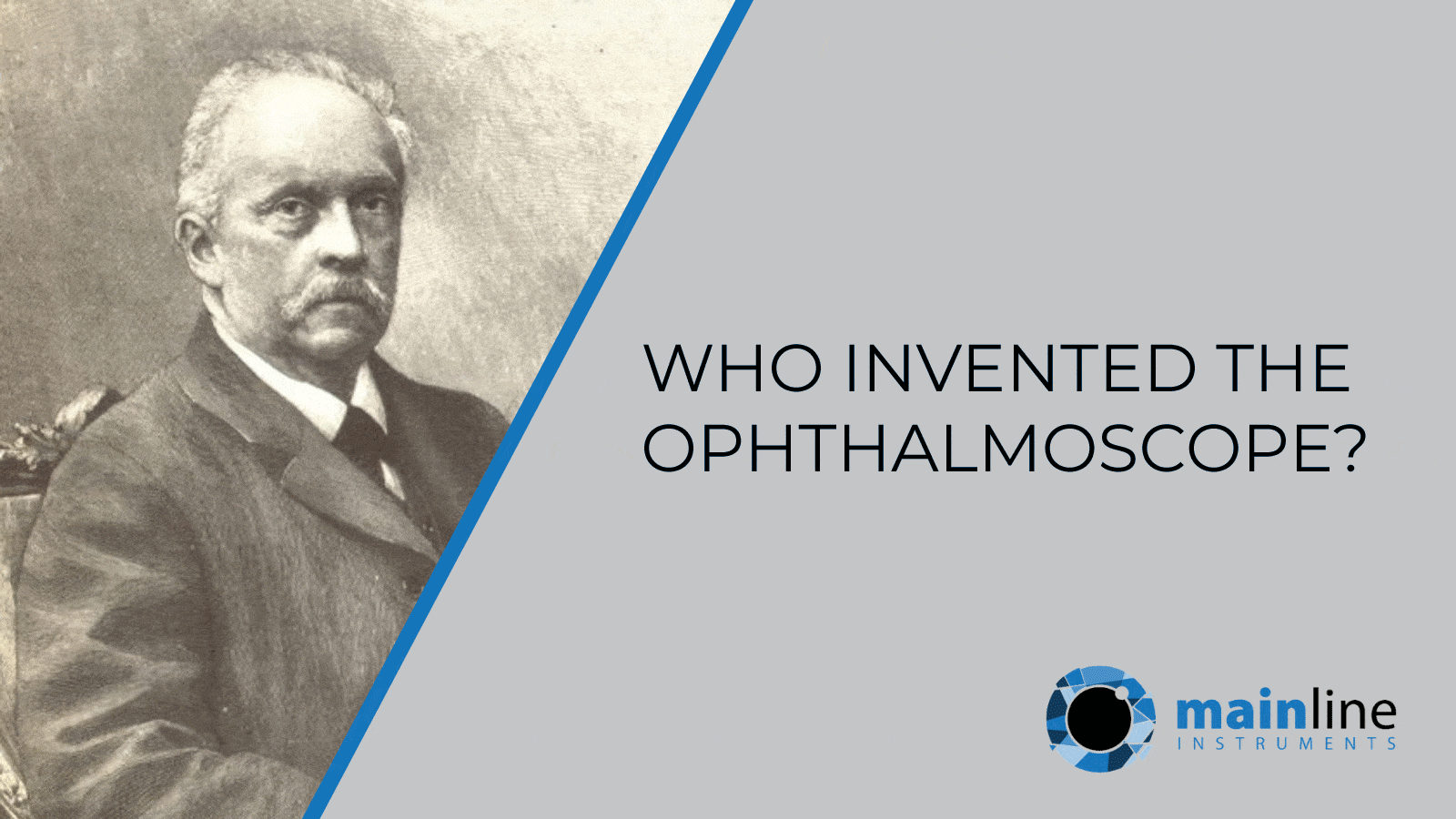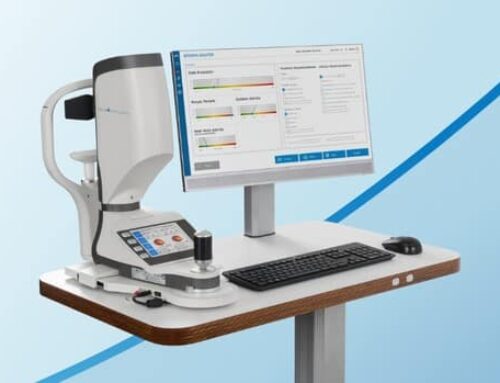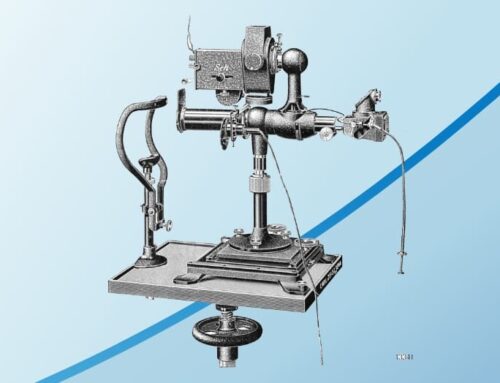An ophthalmoscope is a device used for examining the interior structures of the eye, including the fundus and retina.
It was invented in 1851 by Hermann Von Helmholtz. He was a professor of anatomy and physiology in Königsberg, Germany.[1]
He wanted to show his students the emission of reflected light from the eye. The first model was constructed of pasteboard, eye lenses, and cover glasses used in the microscopic work, which led him to view the retina.
The illuminating source was initially a naked candle flame. Later this was improved by others to an oil lamp and the incandescent bulb when it was invented many years later.
Von Helmholtz used a glass plate reflecting surface initially and this was improved by others to a plano mirror with a central oval cut out aperture. Later models changed the plano mirror to concave mirrors thus concentrating light.
Correcting lenses were a slightly later addition in 1852, using 2 rotatable discs containing a series of lenses.
In 1852, the indirect ophthalmoscope was invented by Ruete. The observed image of the retina was inverted for the first time, unlike the Helmholtz ophthalmoscope.
The binocular indirect ophthalmoscope was invented in 1861 by Felix Giraud-Teulon.[2] It used a solid rhomboid prism to divide the image and had a fixed interpupillary distance, and was handheld.
You can view our full range of ophthalmoscopes on our product page here.
References
[1] https://eyesurgeon.sg/the-history-of-ophthalmoscope/
[2] https://web.stanford.edu/class/history13/earlysciencelab/body/eyespages/eye.html







